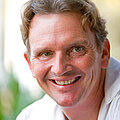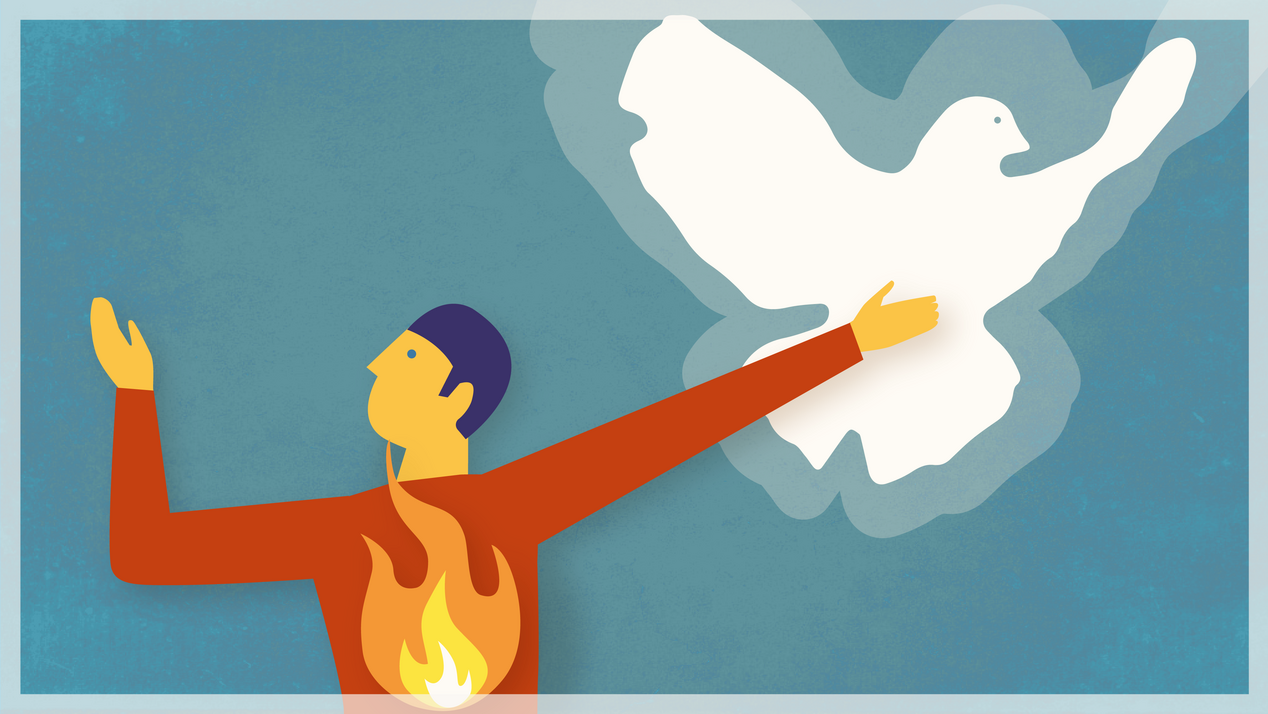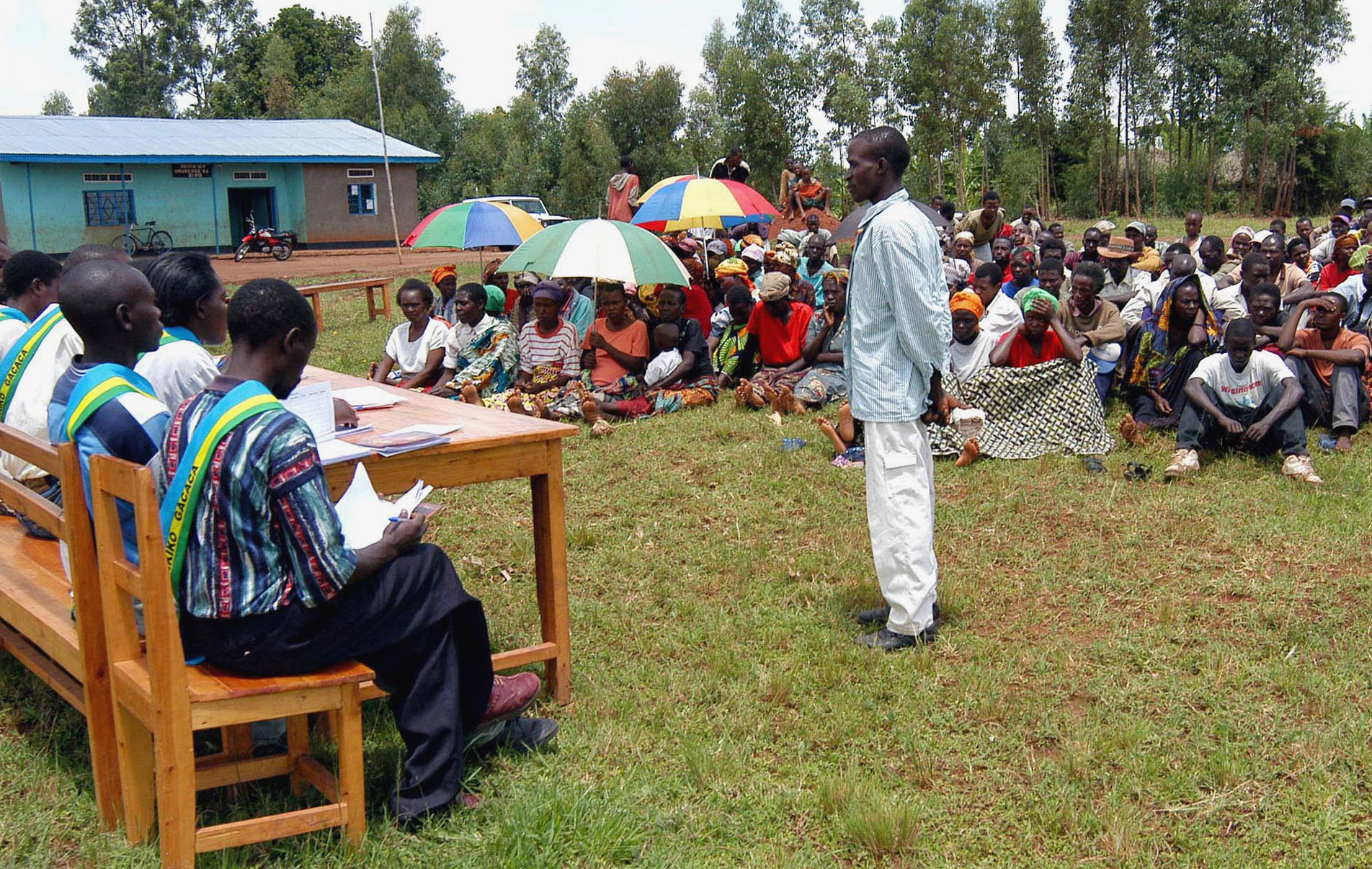Successful Peacemakers
This is where non-governmental peacemakers have an important role to play. Unlike official diplomats, they can find unconventional ways of bringing the members of enemy groups to the negotiating table. When the German Benedictine abbot Benedikt Lindemann opens the doors of his monastery in Jerusalem for discreet talks, Israelis and Palestinians know that they can come together without fear of spies. The hallowed walls provide a refuge. The monk is the mediator. He does not ask the politicians whether he is allowed to get involved. He just does it. He is inspired by an image that he has never lost sight of: the image of Jews, Christians and Arabs all living together in peace in the Holy Land.
This flame burns inside all successful peacemakers. They are driven by a vision of how they can change their country for the better. They are “unrealistic” in the positive sense of the word. They don’t accept things as they are. The importance of this has been shown in Sri Lanka, a country that has been torn apart by a bloody civil war for over 20 years. A young colleague from the shattered north of the country told me: “The war has been going on all my life. It has poisoned our minds and our hearts. We just can’t imagine a life without attacks and bombings.” The worst thing about this is that people who have only ever known violence will always turn to violence as a solution when in doubt. Of course it presents a risk, but at least it is a familiar risk, whereas peace is a journey into the unknown, an adventure with an unpredictable outcome. This is why imagination is so critical. It unleashes energies that – as Einstein said – can take people everywhere.
When Singham, a Tamil who had lived a carefree life in Berlin for 15 years, decided to return to war-torn Sri Lanka, his friends told him he was crazy. But he dared to dream: “One day the island will once again be rightly called “Happy Lanka.” He didn’t just leave it at that, but used donations to build houses for refugee families, set up a school for children orphaned by the war, and looked after street kids. Tamils and Singhalese, supposed enemies, work side-by-side in his organisation. Singham is one of those volunteer bridgebuilders who are prepared to risk all in the quest for reconciliation.
This flame burns inside all successful peacemakers. They are driven by a vision of how they can change their country for the better.
The very best of them are a charismatic blend of Mahatma Gandhi and Bill Gates. They have that rare ability to think big and act decisively – and be good managers. These new professional peace activists understand that security and stability are also linked to money, jobs, economic growth and development. It is worth investing in humankind’s number one dream.
According to experts at Oxford University, the average civil war last seven years. Of course, every year and every victim are one too many, but the good news is that wars do come to an end, sooner or later. But sooner is better than later. If it is not possible to prevent a war, then the international community can at least try to curtail it. United Nations interventions are in fact better than their reputation suggests. According to a study by the US think tank RAND, two out of three peacekeeping missions are successful. And they are cheaper than might be thought when listening to the awkward skirmishes in the Security Council. The total cost of all 16 blue-helmet missions carried out in the last year was just under five billion dollars. To put this into perspective, the USA spent more than this every month on the war in Iraq, and as the world’s self-proclaimed sheriff, they have just experienced one debacle after another.
They use the internet and emails to tell each other what does and doesn’t work. Suddenly a successful campaign in one place has become an object lesson somewhere else.
Multinational institutions such as the United Nations and the European Union are the state counterpart to a closely-linked civil society. The UN and EU have made great strides over the last few decades in combating poverty, improving health and promoting human rights. In this way, they have made a major contribution to building ‘positive peace’: a peace that is more than just the absence of war, a culture that is no longer governed by violence and fear, but by respect and love. In the end, this is what it’s all about.
And of course it’s about money. It’s amazing but true that it makes economic sense to invest in peace. The Oxford experts have calculated that a typical civil war costs around 70 billion dollars. On the loss side, they place lower economic growth, equipment, illness, refugees and organised crime. To look at it another way, every year that such a war can be shortened brings a dividend of 10 billion dollars. It costs just a fraction of this amount to try to end the war by deploying an international intervention force.
The new wars need both approaches. They need their societies to be healed from within, with civil society initiatives and peacemakers being the decisive factor in this respect. They also need strong resolve on the part of the international community if it decides in favour of military intervention. In many troubled regions, the fighting is not done by regular soldiers but by militias organised into unruly gangs. Many of them are still teenagers with the emotional maturity of children. And so this is how they behave – wildly, erratically, turning killing into a game. From my own experience of war zones I know that if someone bangs his fist on the table everyone shuts up. There has to be an authority figure to say ‘that’s enough!’, like the strict father that so many of these children in uniform have never known.
It’s amazing but true that it makes economic sense to invest in peace
Of course, non-violent interventions are in principle always preferable. Europe’s present-day unity has been won at the cost of centuries of bloody war and new spirals of violence. It has been a long hard road to reach today’s union of nations where cultural differences are valued and seen as a positive enrichment. United in Diversity – the EU’s external and cultural policies should spread this motto as inspiration for the rest of the world. There is a good chance that this voice will be heard in places where people are struggling to return to peace. But only if Europe continues to really live its cultural diversity – in a constructive way.










